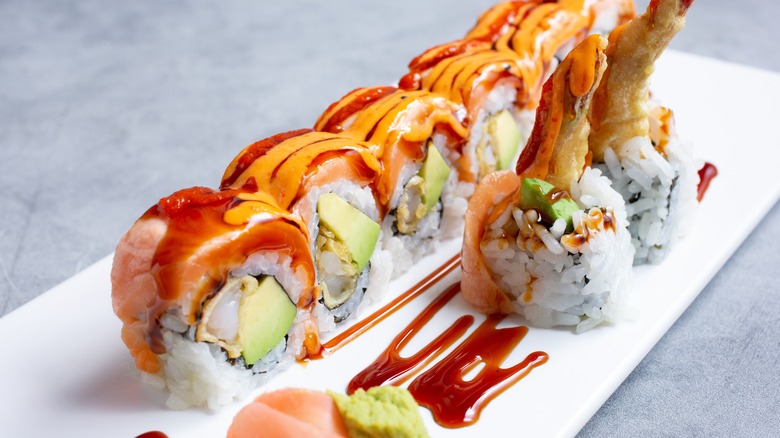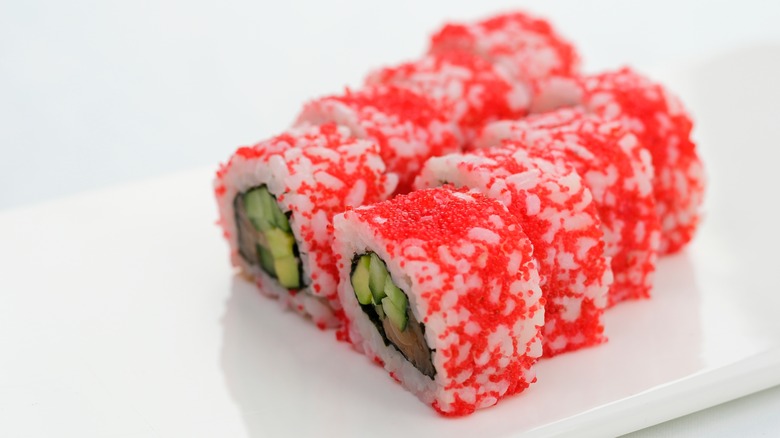What Is A New York Roll And How Does It Differ From Other Sushi?
If you've never had a New York roll, that should be remedied immediately. Not to be confused with the new name for the pastry craze known as a Suprême, this New York roll is a dead-simple sushi wrap made from sautéed shrimp, avocado, cucumber, seasoned rice, and nori, usually topped with a spicy mayo. Perhaps the New York roll's biggest distinction from traditional sushi is the use of cooked, not raw, seafood. They're also "inside out," meaning the nori wrap is covered by the rice. Not only are New York rolls easy to come by in their namesake metropolis, but they're also easy to make at home.
All you need is a bamboo rolling mat and a couple of specialized ingredients. While you're cooking the Japanese short-grain sushi rice, sauté some shrimp in olive oil over medium-high heat for a couple of minutes on each side until you get a good sear without overcooking. Sprinkle the cooked shrimp with salt and pepper. Once the rice is cooled, add seasoned rice vinegar, a pinch of sugar, and mix it all together. The rolls are made with a sheet of nori (the traditional edible seaweed that covers most sushi), the vinegared rice with optional sesame seeds, the cooked shrimp, plus avocado and cucumber cut into matchsticks. The spicy mayo is a down-and-dirty remoulade made from mayonnaise and sriracha. We recommend making your own creamy, dreamy Kewpie mayonnaise. Now, where did these delectable little guys come from?
From California to New York by way of Boston
The New York roll is a close cousin of the Boston roll, which we think might have come first. Boston rolls are also made from cooked shrimp, avocado, cucumber, vinegared rice, and nori, but there are a couple of differences. The shrimp in a Boston roll is poached, not sautéed. In lieu of the New York roll's spicy mayo accompaniment, Boston rolls are garnished with tobiko, the crunchy little orange eggs from a flying fish. Of course, the universal sushi condiments of soy sauce, wasabi, and pickled ginger are still welcome accompaniments.
Both New York and Boston rolls are East Coast adaptations of the California roll, which appears to have been invented in the mid-1960s by chef Ichiro Mashita as a sop to both seasonality and local taste. Mashita invented the "inside-out" roll by covering the nori with seasoned rice instead of the other way around since his American customers usually peeled the seaweed layer off prior to eating! Over time, California rolls ultimately came to feature imitation crab — a crab-less seafood made from a paste called surimi, which is itself a blend of pulverized white fish, egg white, starch, and a little sugar. For their part, New York rolls are an utterly delicious, incredibly simple introduction to making sushi at home.

